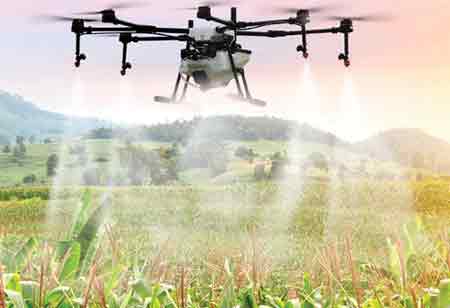Thank you for Subscribing to Agri Business Review Weekly Brief
2024: A Year of Agtech Innovation
The agricultural industry faced challenges in 2024, including extreme weather and supply chain issues, and key trends are expected to impact it in the coming year

By
Agri Business Review | Wednesday, January 31, 2024
Stay ahead of the industry with exclusive feature stories on the top companies, expert insights and the latest news delivered straight to your inbox. Subscribe today.
Synthetic data can enhance the performance of digital twins, supplementing data gaps and reducing time, cost, and effort in bringing new agricultural products to market, providing a competitive edge for input suppliers and seed companies.
Fremont, CA: The agricultural industry faced challenges in 2024, including extreme weather and supply chain issues, and key trends are expected to impact it in the coming year.
Generative Artificial Intelligence in Agtech
Gen AI, or generative AI, is a significant trend in 2024's digital agriculture, offering the potential for process optimization, cost reduction, and innovation. Digital Crop Advisors use Gen AI to provide agronomists with actionable recommendations, analyze big data to optimize production practices and track climate trends, enhancing farmers' resilience to changing climates.
Using Digital Twins to Optimize Field Trials
In 2024, integrating digital twins into field tests and planning is gaining popularity. Digital twins are virtual representations of physical products, allowing researchers to experiment as if they were handling the physical counterpart. This reduces the need for expensive and time-consuming field trials. Synthetic data can enhance the performance of digital twins, supplementing data gaps and reducing time, cost, and effort in bringing new agricultural products to market, providing a competitive edge for input suppliers and seed companies.
Technical Innovation in Regenerative Agriculture
Regenerative agriculture, a method that mimics natural processes and biodiversity on agricultural land, aims to improve soil health and boost yield to address climate change and feed the global population of over 8 billion. Digital tools use accurate data to create tailored solutions, considering soil conditions, weather, microclimates, crop growth, land use, budgets, and local regulations. In 2024, platforms with site-specific data are expected to dominate, promoting sustainability beyond simple carbon metrics and establishing realistic objectives for growers. This approach will help formulate strategies tailored to local environments.
Managing Data with Advanced Cloud Solutions
The cloud has revolutionized agriculture by enabling researchers to collect, manage, and extrapolate data from vast amounts of data. It is predicted that by 2036, farm data will increase. Cloud tools provide real-time access to field trial data, reducing trial duration and cost. These applications optimize crop management, soil insights, multi-season crop monitoring, and decision-making. Cloud-based solutions foster collaboration between researchers, agronomists, and farmers, providing R&D companies with efficient, cost-effective, and scalable solutions.
Innovation across the Agricultural Spectrum
Agriculture is shifting towards sustainability and environmental protection, with progress in climate-resilient crop development expected in the New Year. Digital technologies empower farmers to process and use collected data, while AgTech solutions help measure the return on investment of agricultural technologies. AI and machine learning are driving innovation in food production amidst global challenges.





